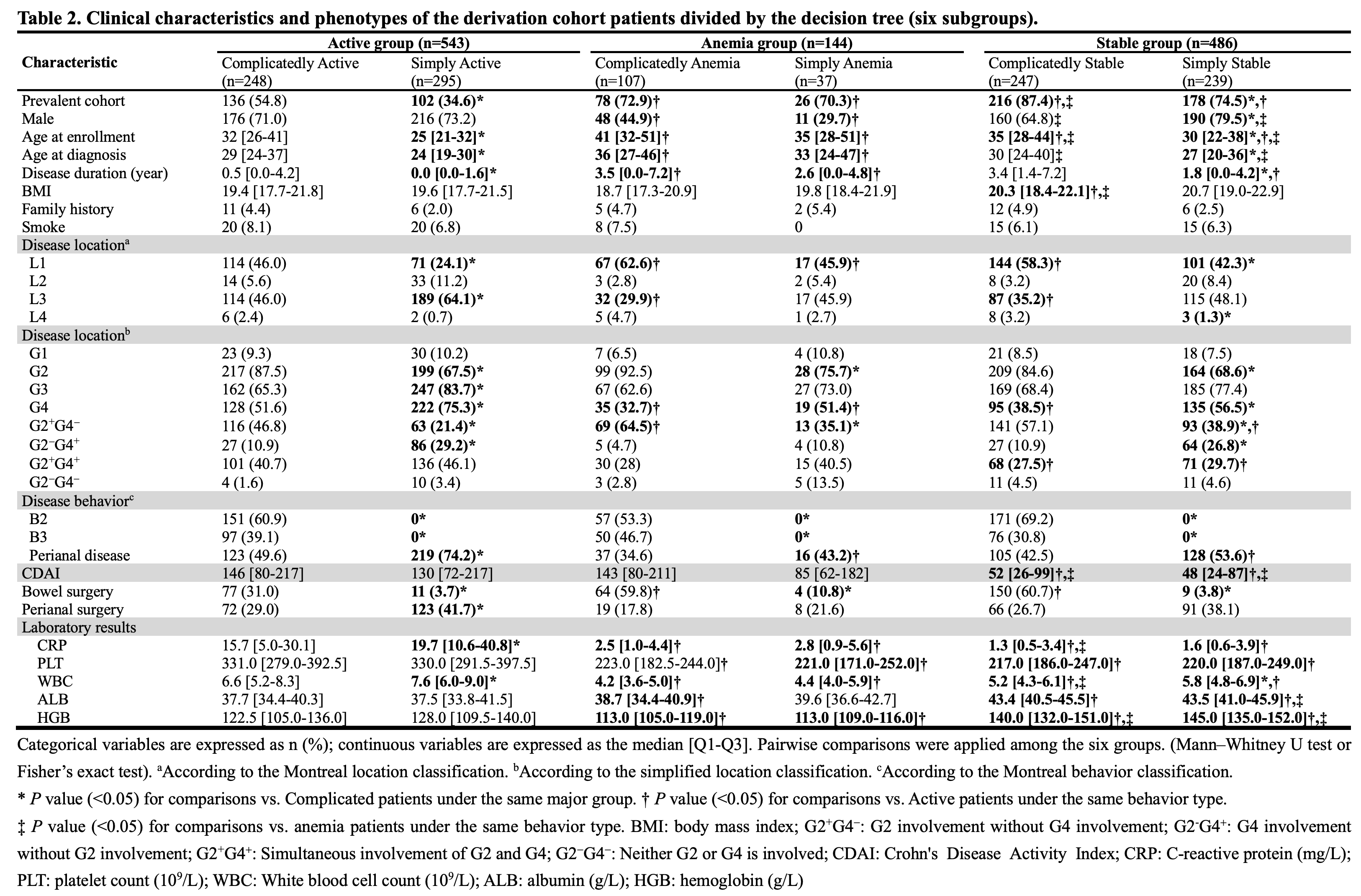P121 Clinicomic profiles new feature patterns based on a simplified location classification for Crohn’s disease
Hu, W.(1)*;Liang, X.(2);Luo, J.(1);Li, P.(1);Shen, K.(3);Li, J.(4);Li, S.(5);Xin, J.(1);Jiang, J.(1);Shi, D.(1);Wang, X.(6);Xu, D.(6);Yu, Q.(6);Zhang, H.(6);Zhang, X.(7);Song, X.(8);Guo, H.(8);Ge, Q.(9);Chen, Y.(9);Chen, X.(10);Chen, Y.(6);Li, J.(1);
(1)The First Affiliated Hospital- Zhejiang University School of Medicine, State Key Laboratory for Diagnosis and Treatment of Infectious Diseases, Hangzhou, China;(2)Taizhou Central Hospital Taizhou University Hospital, Precision Medicine Center, Taizhou, China;(3)The Second Affiliated Hospital- Zhejiang University School of Medicine, Department of Radiology, Hangzhou, China;(4)Zhejiang Provincial People’s Hospital, Department of Gastroenterology, Hangzhou, China;(5)The Second Affiliated Hospital- Zhejiang University School of Medicine, Department of Nursing, Hangzhou, China;(6)The Second Affiliated Hospital- Zhejiang University School of Medicine, Department of Gastroenterology, Hangzhou, China;(7)Nanjing Drum Tower Hospital- Affiliated Drum Tower Hospital- Medical School of Nanjing University, Department of Gastroenterology, Nanjing, China;(8)Chongqing General Hospital, Department of Gastroenterology, Chongqing, China;(9)Huadong Hospital Affiliated to Fudan University, Department of Gastroenterology, Shanghai, China;(10)Zhejiang University School of Medicine, Institute of Pharmaceutical Biotechnology and the First Affiliated Hospital Department of Radiation Oncology, Hangzhou, China;
Background
Crohn’s disease (CD) is a heterogeneous and complicated condition that often has delayed diagnoses and poor outcomes. Disease location and site-specific mechanisms have received increasing attention in recent studies. Suboptimal classification adds complexity to clinical management for CD and the interpretation of its characteristics. This study aims to clarify the clinicopathological characteristics of CD patients through a prospective cohort.
Methods
The clinical data from 1173 patients with definite CD diagnoses and a simplified location classification based on anatomical traits (G1: esophagus+stomach+duodenum; G2: jejunum+ileum; G3: ileocecum; G4: colon+rectum) were used to clarify the feature patterns (Figure 1).

Results
Of the enrolled patients, 437 were newly diagnosed, and 736 were prevalent patients. A higher proportion of L4 involvement (45.8%) and a lower proportion of L2 (6.8%) patients were observed under the Montreal location classification. Single G2 (17.8%), G2+G3 (22.2%), G3+G4 (12.5%) and G2+G3+G4 (27.8%) were the four major types in the simplified location classification (Figure 2A-2B). The patients with G4 presented with higher C-reactive protein, G2 patients had more stricturing/penetrating behavior, and single G2 patients had the oldest age at diagnosis (Table 1). A clinicomic study with machine learning methods including principal component analysis, cluster analysis and partial least squares discriminant analysis, identified hemoglobin, platelet count and C-reactive protein as the three key indicators. A decision tree based on the three indicators and disease behavior stratified all patients into six feature patterns (simply/complicatedly active, simply/complicatedly anemia and simply/complicatedly stable), which formed a two-twisted-cycle model for natural disease history (Figure 2C). Most patients started their cycles at the active phase, and the “simply” cycle was mainly advanced by medications, while most patients in the “complicatedly” cycle needed multidisciplinary care. Comparisons among the six subgroups showed that age at diagnosis had the same rise-and-fall pattern as the G2+G4- proportion, while the G2-G4+ proportion showed the opposite trend (Table 2, Figure 2D-2E). An external validation group (n=301) confirmed the above results. The role of disease location could be interpreted as an important factor determining its start point and site-specific trajectory in the two-twisted-cycle model.


Conclusion
Site-specific clinical characteristics clarified by the simplified location classification, the new feature patterns profiled by the clinicomic study may provide new insights into CD phenotyping, risk stratification and precision treatment.


